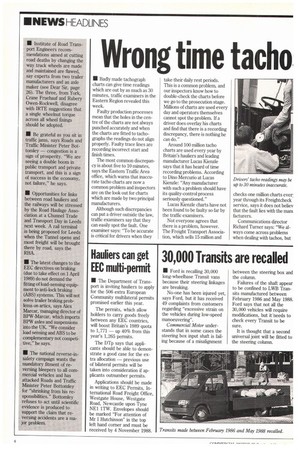• Institute of Road Transport Engineers recommendations aimed at cutting
Page 4

If you've noticed an error in this article please click here to report it so we can fix it.
road deaths by changing the way truck wheels are made and maintained are flawed, say experts from two trailer manufacturers and an axle maker (see Dear Sir, page 26). The three, from York, Crane Fruehauf and Rubery Owen-Rockwell, disagree with IRl'E suggestions that a single wheelnut torque across all wheel fixings should be adopted.
• Be grateful as you sit in traffic jams, says Roads and Traffic Minister Peter Bottomley — congestion is a sign of prosperity. "We are seeing a double boom in public transport and private transport, and this is a sign of success in the economy, not failure," he says.
• Opportunities for links between road hauliers and the railways will be stressed by the Road Haulage Association at a Chunnel Trade and Transport Day in Leeds next week. A rail terminal is being proposed for Leeds when the Tunnel opens and most freight will be brought there by road, says the RHA..
• The latest changes to the EEC directives on braking (due to take effect on 1 April 1989) do not demand the fitting of load-sensing equipment to anti-lock braking (ABS) systems. This will not solve trailer braking problems on artics, says Alex Marcar, managing director of BPW-Marcar, which imports BPW axles and suspensions into the UK. "We consider load sensing and ABS to be complementary not competitive," he says.
• The national reverse-insafety campaign wants the mandatory fitment of reversing bleepers to all commercial vehicles and has attacked Roads and Traffic Minister Peter Bottomley for "shrinking from his responsibilities." Bottomley refuses to act until scientific evidence is produced to support the claim that reversing accidents are a major problem.














































































